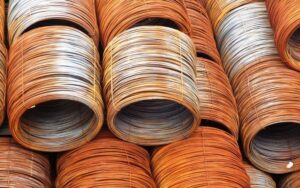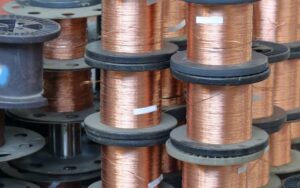Table of Contents
Medical sensors help to receive, transmit and report signals. For this reason, sensors are crucial parts of many medical devices to examine physical, biological, and chemical processes in the body. There are an enormous number of advantages that the minimally invasive sensors bring to the doctors, such as
- Sensors have definitely helped the doctor to reach many difficult regions in the body, that would be otherwise impossible.
- Sensors help to remove the cancers through heating and freezing. Therefore, it has substantial applications in Cryo cancer treatment.
- Sensors not only minimize the disruption in body functioning but also reduce energy consumption.
- Now, doctors have become able to improve the implants’ lifespan with the help of sensors.
The awareness for suitable manufacturing technologies for medical sensors has developed with the increasing demand for tiny medical sensors. The Micro-coil manufacturing process through ultra-fine wires is the foundation of the preparation of medical sensors. However, to manufacture ultra-fine wires and micro-coils, manufacturers should have sufficient knowledge and effective technologies. The medical sensors manufacturing process requires precise, built in-house, and custom-made equipment and machinery.
Micro-Coils Manufacturing Requirements:
When it comes to manufacturing the micro-coils for medical sensors, the major manufacturing requirements are-
- According to the purpose of the application, clients may require some specifications. Therefore, the micro-coils should provide all these specifications.
- Manufacturers should conduct various quality checks in order to ensure that there is no fault in the manufacturing process and micro-coils are of high standards.
- Manufacturers cannot use the purchased equipment for the micro-coil manufacturing process. Instead, they should design and develop the machinery from the scratch on the basis of the application area.
- During the manufacturing process, manufacturers should follow the ISO 13485 so that the clients can inspect the whole manufacturing process.
- Material traceability is another essential requirement to trace the raw materials used for the manufacturing process. Material traceability also helps the manufacturers to obtain information such as manufacturing date, workers of the manufacturing process, the manufacturer of the device, etc.
Applications of Medical Sensors:
Medical sensors play a crucial role in an enormous number of applications, such as
- Therapeutic Applications:
Medical sensors have significant therapeutic applications, for example, to prepare the devices for electrophysiology treatments, such as cardiac and neural, and to prepare the devices for electricity-based ablations, such as microwave and RF.
- Navigation and Orientation:
The application areas for navigation and orientation sensors are very wide, such as targeted radiation catheters, implanted markers, targeted drug delivery, endoscopic manipulation, highly accurate ablations, and stent positioning.
- Active Implants:
In order to monitor and control miniature pacemakers and deep brain stimulation, active implants are useful. Sensors help to prepare these active implants.
- Diagnostics:
When it is about conducting wireless communication with the help of miniature implants, sensors are necessary.
- Temperature Measurement:
Sensors are crucial elements in some temperature measurement devices that involve miniature thermocouples.
- Dental and Orthopedic Treatment:
In the case of dental and orthopedic treatments, medical sensors use electromagnetic pulses through building a connection between the operating system and the micro-coil.
How to Manufacture Tiny Micro-Coils?
Ultra-fine wires not only help to manufacture the micro-coils through the winding process but also provide connectivity to the sensors. Apart from copper, manufacturers can use other metals for the manufacturing of ultra-fine wires. As the manufacturers require to fit the sensors into the limited physical size of the medical devices, therefore, the sensors have to be very tiny. For that reason, manufacturers require to use ultra-fine wires that can be down to 59 AWG (9 microns or 0.00035 inches). So, human hair is ten times thicker than this wire. The winding of the ultra-fine wires around a pin or core is the main procedure for the manufacturing of the micro-coils. To work with these tiny wires, manufacturers require in-house winding machinery with advanced micro-motion facilities and control systems.
Connectivity Solutions:
For the preparation of micro-coils, it is essential to connect the ultra-fine wires. The heat-based soldering methods are not effective to connect the ultra-fine wires due to numerous drawbacks, such as heat damage, degraded connections, poor conductivity, oxidation of the connection, etc. For this reason, most manufacturers now rely on Thermo compression bonding technology. This is an effective technique to join similar wires as well as dissimilar wires. You will also have reliable and trustable joints through this method.




